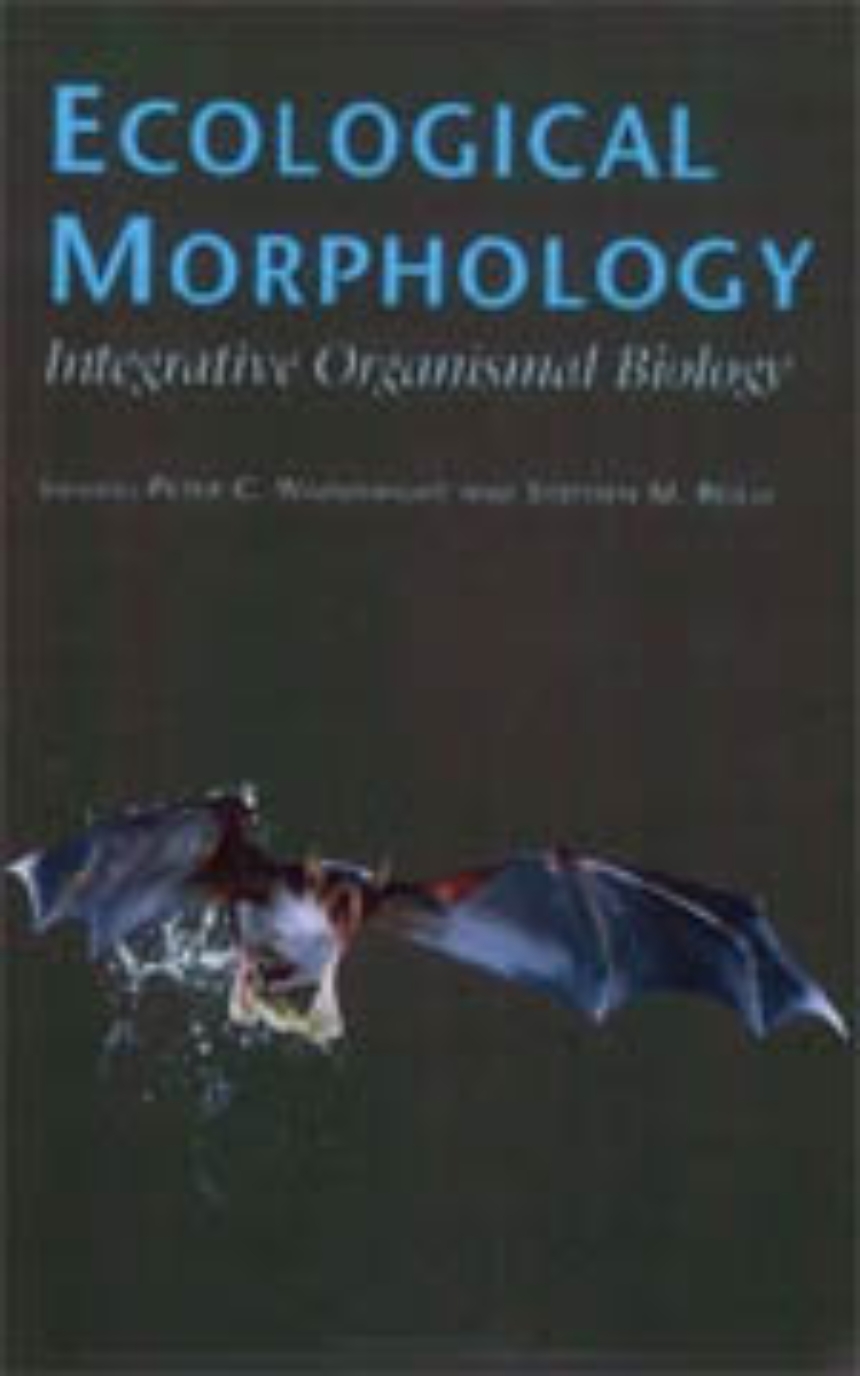Ecological Morphology
Integrative Organismal Biology
Ecological morphology examines the relation between an animal’s anatomy and physiology—its form and function—and how the animal has evolved in and can inhabit a particular environment. Within the past few years, research in this relatively new area has exploded. Ecological Morphology is a synthesis of major concepts and a demonstration of the ways in which this integrative approach can yield rich and surprising results.
Through this interdisciplinary study, scientists have been able to understand, for instance, how bat wing design affects habitat use and bat diet; how the size of a predator affects its ability to capture and eat certain prey; and how certain mosquitoes have evolved physiologically and morphologically to tolerate salt-water habitats. Ecological Morphology also covers the history of the field, the role of the comparative method in studying adaptation, and the use of data from modern organisms for understanding the ecology of fossil communities.
This book provides an overview of the achievements and potential of ecological morphology for all biologists and students interested in the way animal design, ecology, and evolution interact.
Through this interdisciplinary study, scientists have been able to understand, for instance, how bat wing design affects habitat use and bat diet; how the size of a predator affects its ability to capture and eat certain prey; and how certain mosquitoes have evolved physiologically and morphologically to tolerate salt-water habitats. Ecological Morphology also covers the history of the field, the role of the comparative method in studying adaptation, and the use of data from modern organisms for understanding the ecology of fossil communities.
This book provides an overview of the achievements and potential of ecological morphology for all biologists and students interested in the way animal design, ecology, and evolution interact.
376 pages | 54 line drawings, 5 tables | 6 x 9 | © 1994
Biological Sciences: Ecology, Physiology, Biomechanics, and Morphology
Table of Contents
Contents
1 Introduction, Peter C. Wainwright and Stephen M. Reilly
Part I. Concepts, Issues, and Approaches
2 Ecological and Evolutionary Inferences from Morphology: An Ecological Perspective, Robert E. Ricklefs and Donald B. Miles
3 Functional Morphology as a Tool in Ecological Research, Peter C. Wainwright
4 Adaptation, Constraint, and the Comparative Method: Phylogenetic Issues and Methods, Jonathan B. Losos and Donald B. Miles
5 Evaluating the Adaptive Role of Morphological Plasticity, Joseph Travis
6 Allometric Aspects of Predator-Prey Interactions, Sharon B. Emerson, Harry W. Greene, and Eric L. Charnov
7 Ecomorphological Analysis of Fossil Vertebrates and Their Paleocommunities, Blaire Van Valkenburgh
Part II. Model Systems
8 Roles of Hydrodynamics in the Study of Wave-Swept Shores, Mark W. Denny
9 Wing Design, Flight Performance, and Habitat Use in Bats, Ulla Norberg
10 Ecological Morphology of Locomoter Performance in Squamate Reptiles, Theodore Garland, Jr., and Jonathan B. Losos
11 The Role of Physiological Capacity, Morphology, and Phylogeny in Determining Habitat Use in Mosquitoes, Timothy J. Bradley
12 The Ecological Morphology of Metamorphosis: Heterochrony and the Evolution of Feeding Mechanisms in Salamanders, Stephen M. Reilly
13 Conclusion: Ecological Morphology and the Power of Integration, Stephen M. Reilly and Peter C. Wainwright
1 Introduction, Peter C. Wainwright and Stephen M. Reilly
Part I. Concepts, Issues, and Approaches
2 Ecological and Evolutionary Inferences from Morphology: An Ecological Perspective, Robert E. Ricklefs and Donald B. Miles
3 Functional Morphology as a Tool in Ecological Research, Peter C. Wainwright
4 Adaptation, Constraint, and the Comparative Method: Phylogenetic Issues and Methods, Jonathan B. Losos and Donald B. Miles
5 Evaluating the Adaptive Role of Morphological Plasticity, Joseph Travis
6 Allometric Aspects of Predator-Prey Interactions, Sharon B. Emerson, Harry W. Greene, and Eric L. Charnov
7 Ecomorphological Analysis of Fossil Vertebrates and Their Paleocommunities, Blaire Van Valkenburgh
Part II. Model Systems
8 Roles of Hydrodynamics in the Study of Wave-Swept Shores, Mark W. Denny
9 Wing Design, Flight Performance, and Habitat Use in Bats, Ulla Norberg
10 Ecological Morphology of Locomoter Performance in Squamate Reptiles, Theodore Garland, Jr., and Jonathan B. Losos
11 The Role of Physiological Capacity, Morphology, and Phylogeny in Determining Habitat Use in Mosquitoes, Timothy J. Bradley
12 The Ecological Morphology of Metamorphosis: Heterochrony and the Evolution of Feeding Mechanisms in Salamanders, Stephen M. Reilly
13 Conclusion: Ecological Morphology and the Power of Integration, Stephen M. Reilly and Peter C. Wainwright
